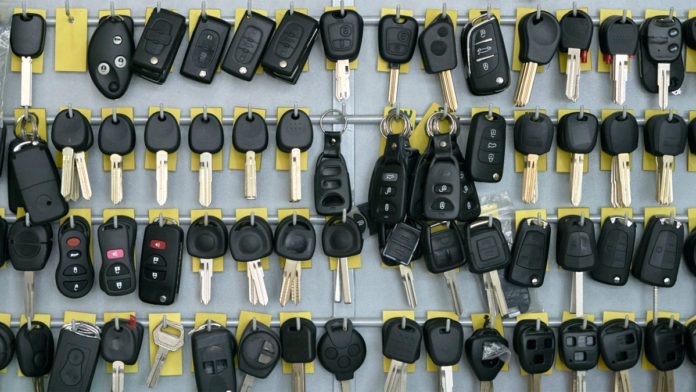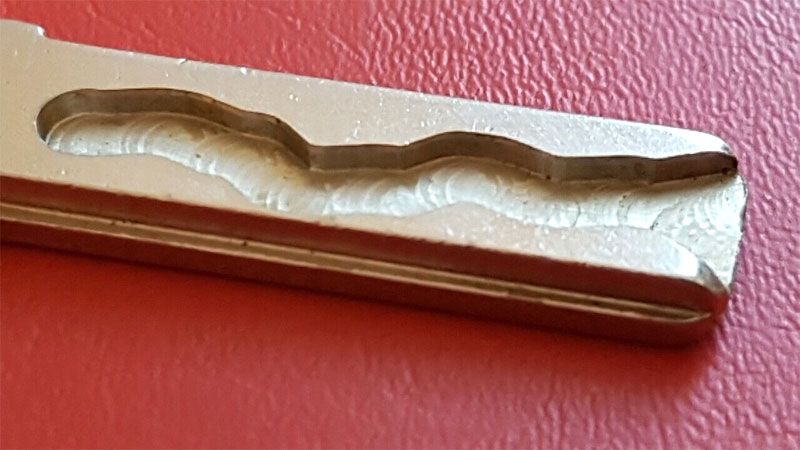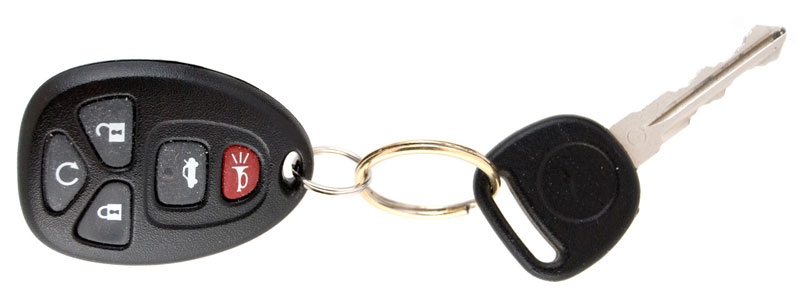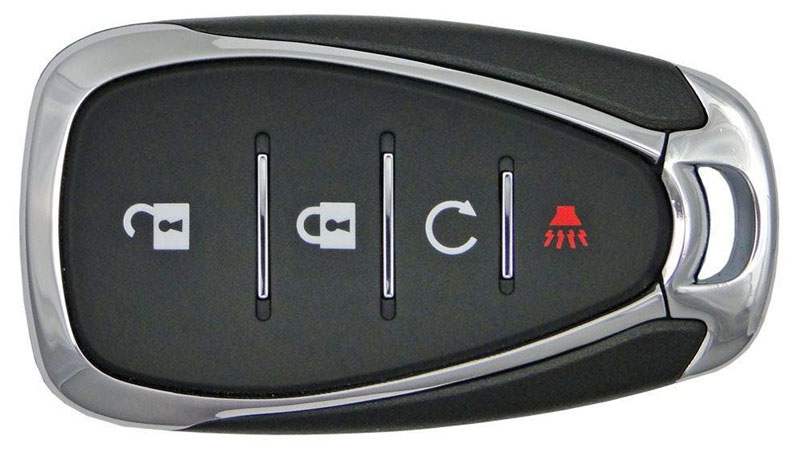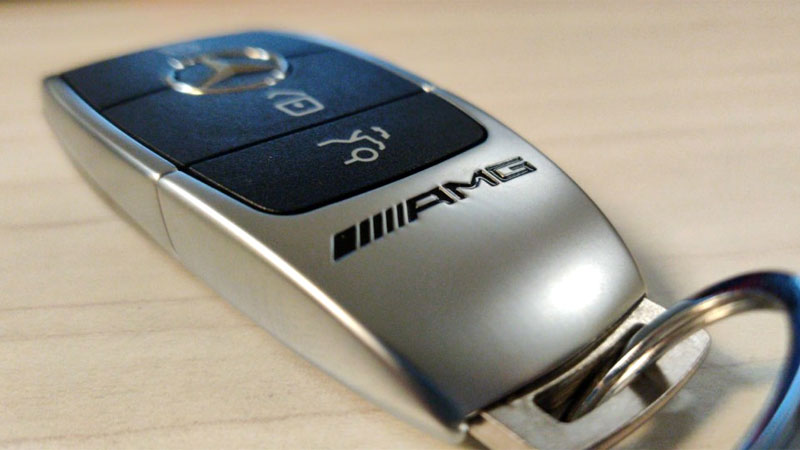Let’s take a look at one automotive item we take for granted that has changed a lot since it was first created. In an increasingly digital age, car keys have gone from something totally foreign to us today to fobs that can start a car from inside your home on a cold morning.
The electric starter was invented by Charles Kettering and first used on Cadillac’s Touring Edition in 1912. This was the point where the modern concept of a car key got its start. However, these house key-like car keys weren’t the first type of car key.
Kick back, relax, and let’s take a look at 11 different car keys that span the entire history of the automobile. Many of these will be familiar, while others might come as a surprise. Unfortunately, while all of the keys on this list have their own unique features, sadly none are yet able to tell you where they are when you’re running late for work.
See Also – 5 Reasons Your Key Is Stuck in the Ignition
Types of Car Keys
1. Crank Key
The very first car keys were unlike modern keys. Instead, they were hand cranks that were inserted directly into the engine and wound to get the vehicle started.
As early automobiles had all-metal construction (excluding the seat cushions, of course), starting the car could be quite difficult. Safety was also a huge concern, as it was easily to lose your grip on the crank and have it spin at you.
In order to safely use the crank key, the motorist needed to stand beside it and keep their thumbs facing the same direction as their fingers to avoid injury from slips. The crank key quickly became obsolete with the advent of the electric starter.
2. Flip Style Car Key
These compact car keys have earned the nickname of “switchblade car key” because of their unique folding mechanism. When not in use, the key folds into the key fob, saving space and protecting the key from being damaged.
This type of key has become increasingly popular among car manufacturers and car owners alike due to their compact nature. In fact, there are a number of services available that can take other types of car keys and convert them into flip style keys.
3. Laser Cut Car Key
Traditionally, car keys were made in the same manner as other keys. This meant that copies could be made by using a grinder to shape additional keys to match the original. Of course, this also means that someone who obtains your car key or makes a mold of the lock can create a replica and potentially steal your car. Laser cut car keys are designed to foil this plan.
Initially used in the 1990s for luxury cars, the laser cut key is thicker than a normal car key and is laser-cut to have matching teeth and grooves on both sides. This makes it extremely difficult to make copies.
In newer cars, laser cut keys often include a remote handle equipped with a transponder chip. This makes it even more difficult to copy the key by adding a second layer of security.
4. Master Car Key
Imagine having a skeleton key that works for cars. This is precisely what a master car key is. They’re designed to be able to work on the doors and ignitions of many different vehicles.
Ideally, their purpose is to be used by locksmiths and certain professional automotive services to access cars which may have been abandoned or the owner has locked themselves out. However, these keys are highly sought after by criminals, as they can also make auto theft much easier.
Master car keys are often regulated by law, and simply being in possession of one without legal grounds can result in very serious criminal charges. Of course, this doesn’t stop a determined car thief, and there are ways to illegally obtain or create master car keys.
5. Mechanically Cut Car Key
These are a more traditional style of car key that remained popular for a large percentage of automobile history. These keys have no digital components and can be copied using a standard key blank at any hardware store.
Because of this, mechanically cut keys are no longer common and will usually only be found on older vehicles. They have instead been supplanted by laser cut car keys and digital key fobs.
Even though there are less of these keys around, meaning fewer car owners accidentally leaving their keys in the ignition for car thieves, car theft continues to increase.
6. Remote Car Key Combo
Chances are, when you think of key fobs, you’re picturing a remote car key. Unlike laser cut car keys, the key portion of a remote car key fob doesn’t have a transponder chip.
Instead, the battery-powered fob has a transponder with buttons that can lock or unlock the doors or active a panic alarm. The key portion of the fob is needed to start the ignition, and sometimes can be used to manually unlock the car doors.
These keys are a popular intermediary between smart keys and laser cut keys, as they allow remote locking/unlocking of the car as well as locating your car in a crowded parking lot, but you can still unlock the vehicle with a physical key if the fob portion is dead or malfunctioning.
7. Rolling Code Car Key
This type of car key is one of the most secure options out there. First introduced in 1999, this is a popular alternative to the transponder car key for one very simple safety feature.
Unlike transponders, which are programmed for a specific code and frequency, rolling code transponders change their code every time they’re used, similar to how modern garage door openers work.
One of the great things about this feature is that you can’t simply replicate, hack, or otherwise copy the key. The car will only respond to the rolling code key it came with. Unfortunately, this also means losing one can set you back a few hundred dollar because the car’s locking system will also have to be reprogrammed in order to replace the key.
8. Smart Car Key (Modern Key Fob)
Often referred to as the keyless car key, the smart key is becoming increasingly popular in the automotive industry. The car is able to detect the fob when you’re within a certain range. What sets this type of car key apart from others is that there’s no key portion to insert into the ignition. Instead, the car is started at the press of a button (referred to as “push-button start”).
One of the advantages to this is that you can keep the key in your pocket or purse, so there’s less chance of locking yourself out of your car. Unfortunately, smart car keys are expensive to replace if lost or damaged, and you may have to have your local dealership reprogram the key to the car in the process. For this reason, they have yet to fully replace insertable car keys.
9. Tibbe Car Key
Notably used by Ford and Jaguar, this odd type of key is designed with security in mind. They were introduced into the automotive industry in the 1980s and are cylindrical instead of flat. This means you can’t simply go to the hardware store to make a copy. As a result, it’s much harder to steal a car or duplicate its key if that car uses tibbe keys.
Another security feature of the tibbe key is that it’s programmed specifically for your car, meaning it’s that much harder to simply duplicate one. When you need to replace a tibbe key, you’ll have to special order it and then have a mechanic program the key so it can be used with your vehicle.
They’re one of the more secure types of car keys out there, but never really caught on.
10. Transponder Car Key
Transponder keys aren’t a single type of key, but an entire classification for any type of car key which contains a transponder chip. They first entered use in the 1990s and are now the standard for most cars.
Because the transponder is housed in a fob, the actual key can come in a wide range of different types, such as fold out keys or remote keys.
Transponders add a level of safety to vehicles that most non-transponder keys lack. The transponder is programmed to match your vehicle, so it’s much harder to make copies of the key. While you can still find new vehicles that don’t use a transponder key, they’re few and far between.
11. Valet Car Key
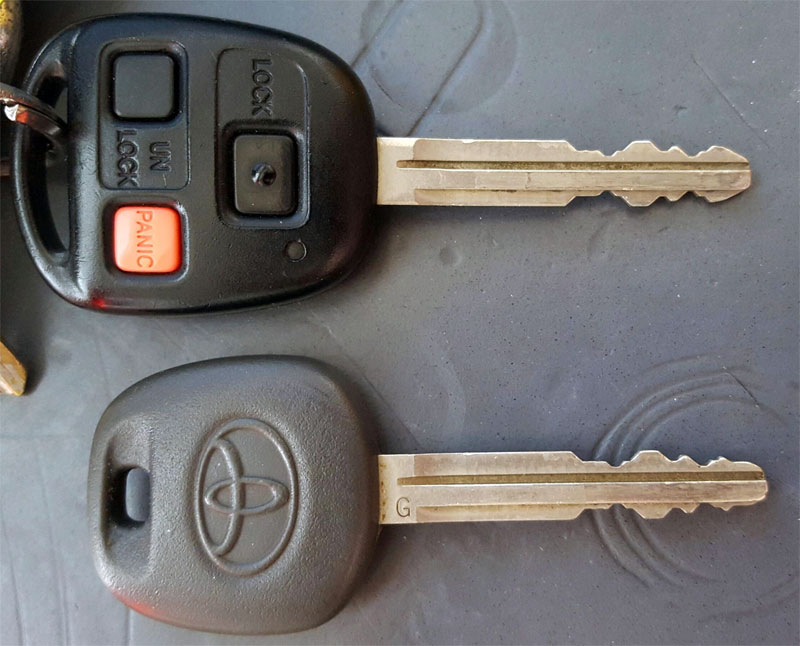
These are special keys that are available to car owners which are designed to have limited functionality. A valet who is given this type of key will be able to unlock the doors and turn the ignition, but cannot access other areas of the vehicle such as the glove box or trunk. This means you don’t have to worry about sticky fingers getting stuck to any valuables.
In addition, some vehicles will also electronically restrict the vehicle from going over a certain speed or RPM when the valet key is in use.
However, even if you don’t make use of valet services, a valet key can be useful. They make a great backup if you lock yourself out of the car or have lost your main key. The downside is that valet keys won’t work on vehicles that take more niche key types such as smart keys where a physical key slot is not present.

